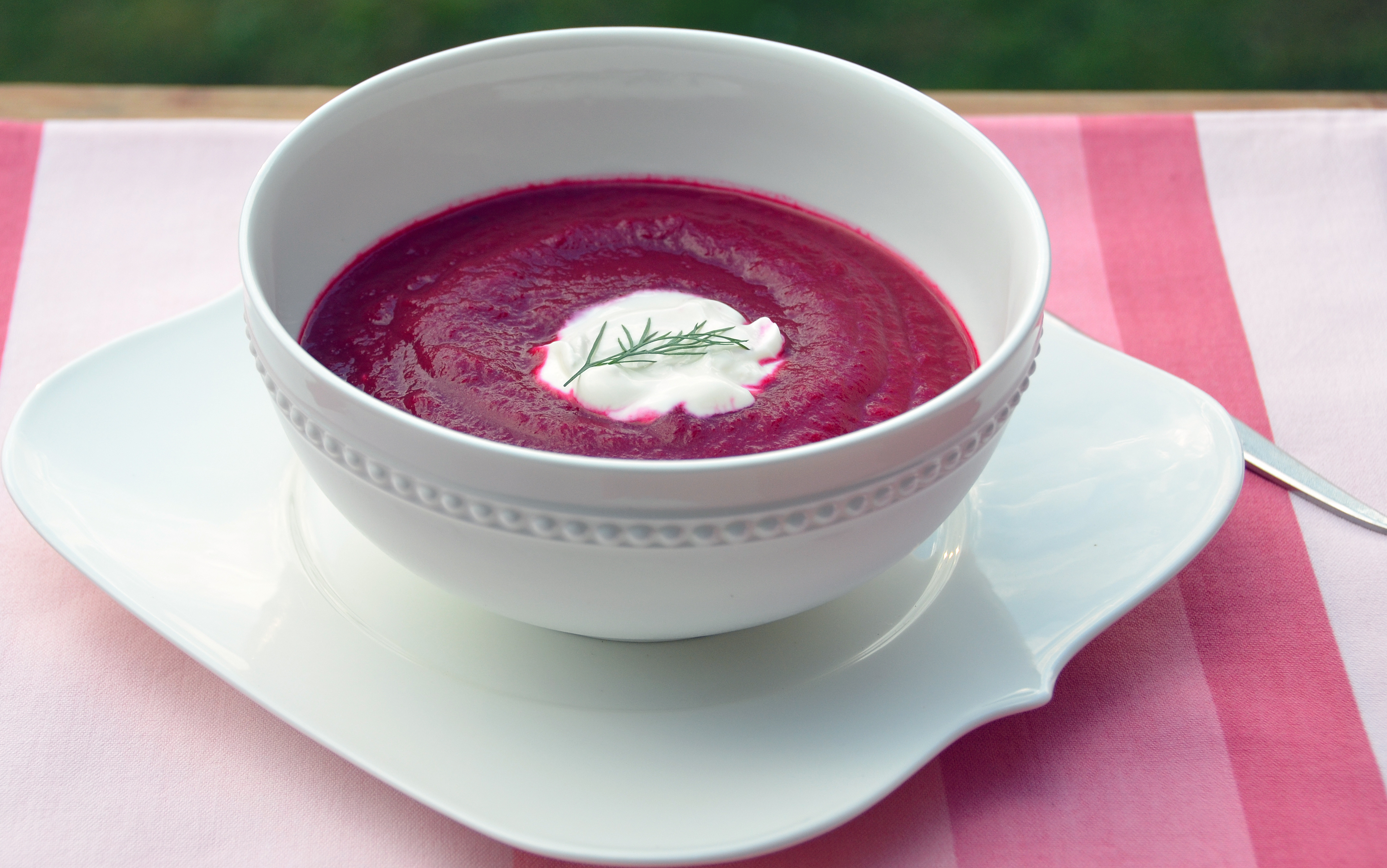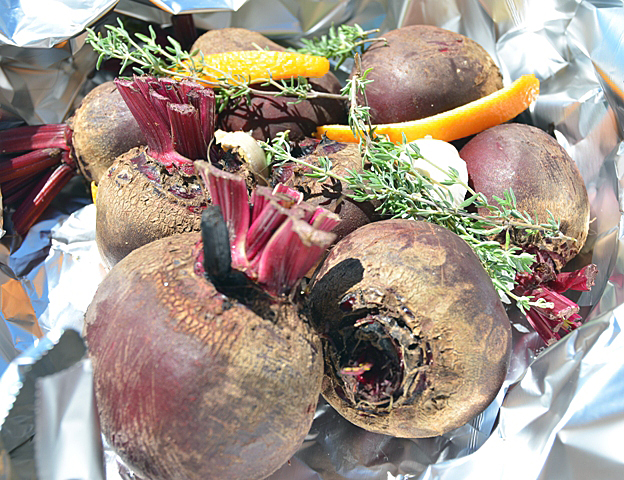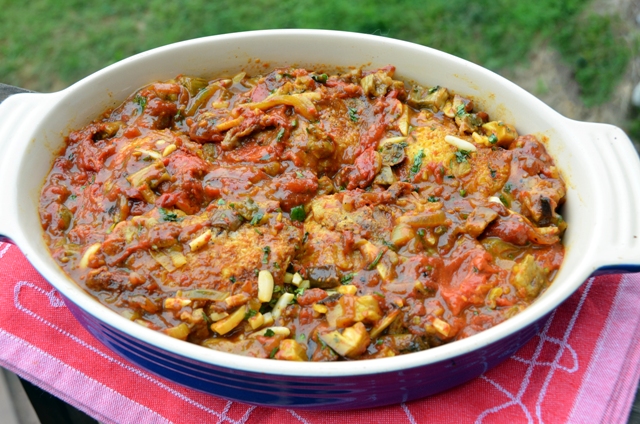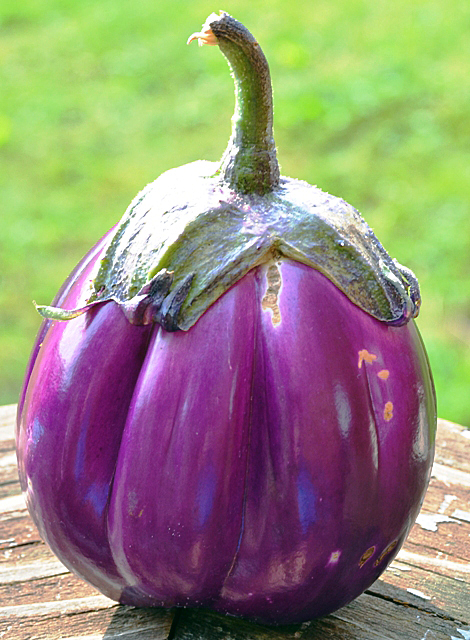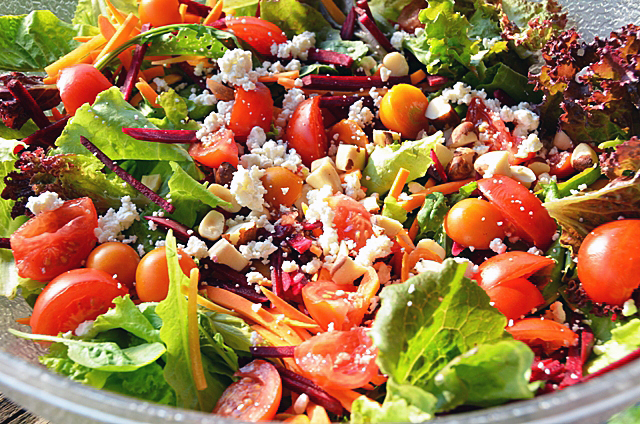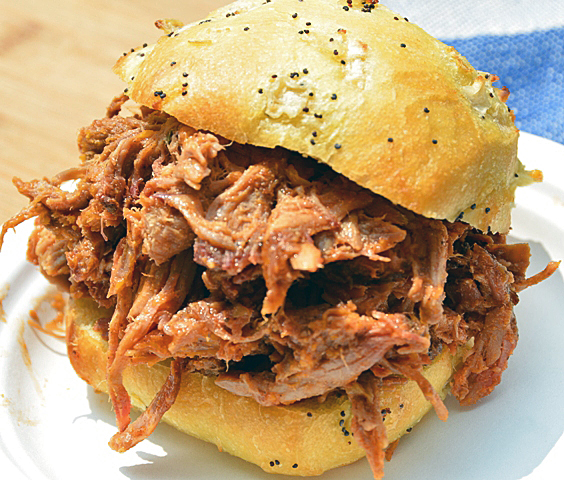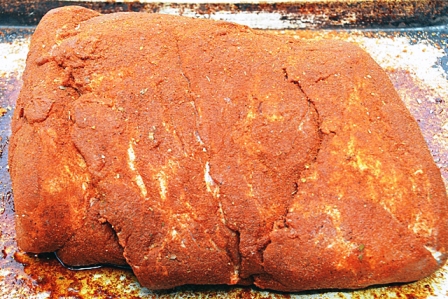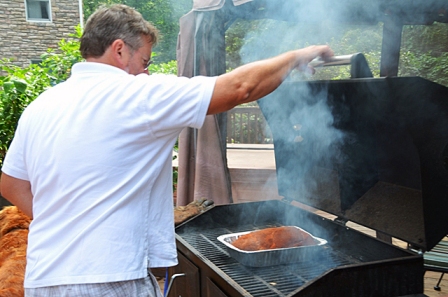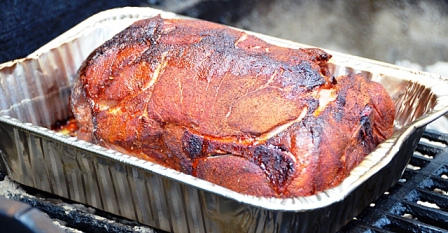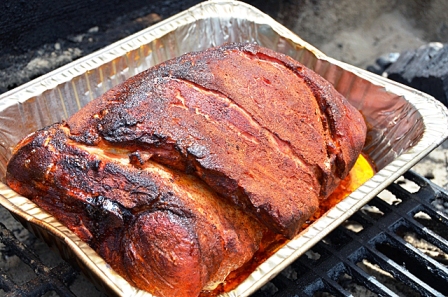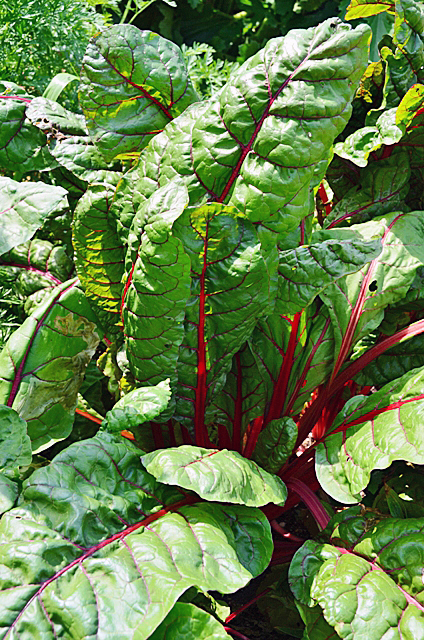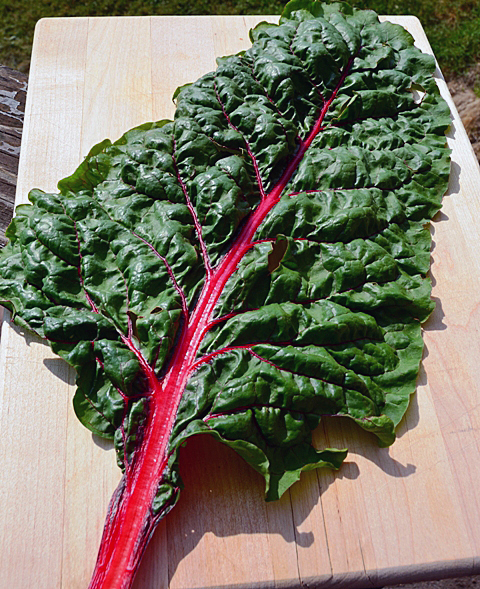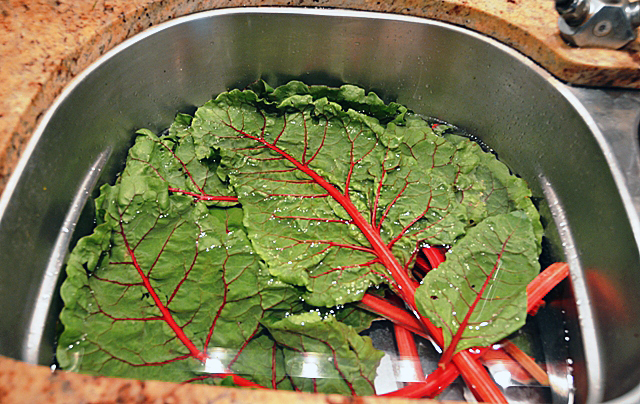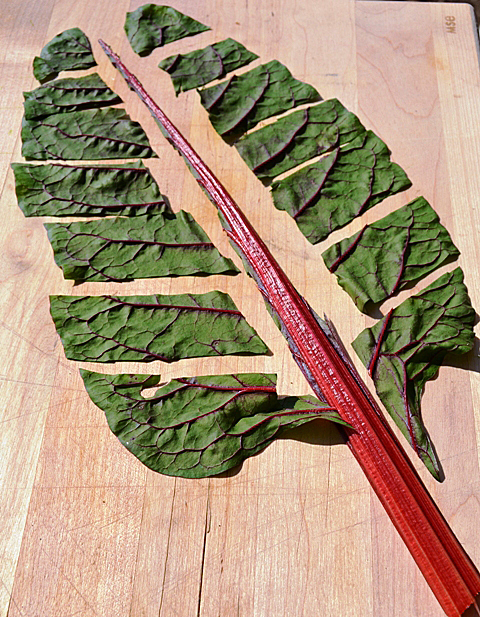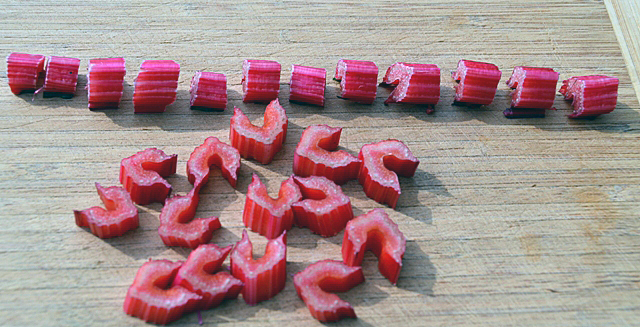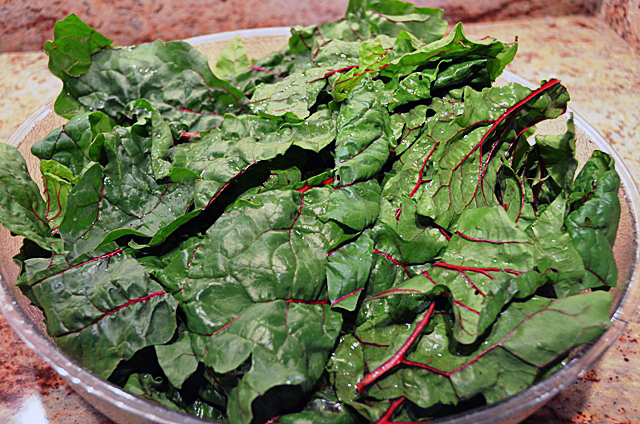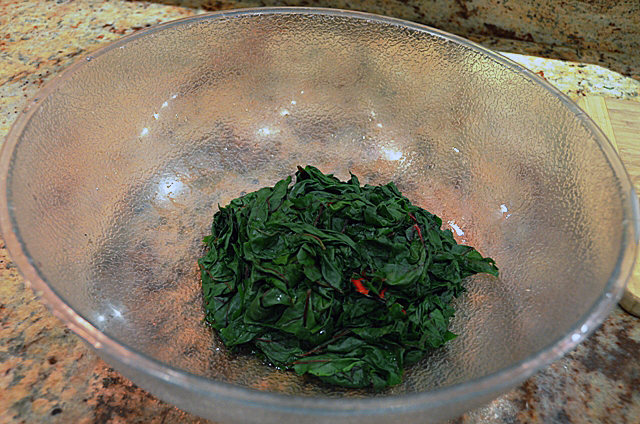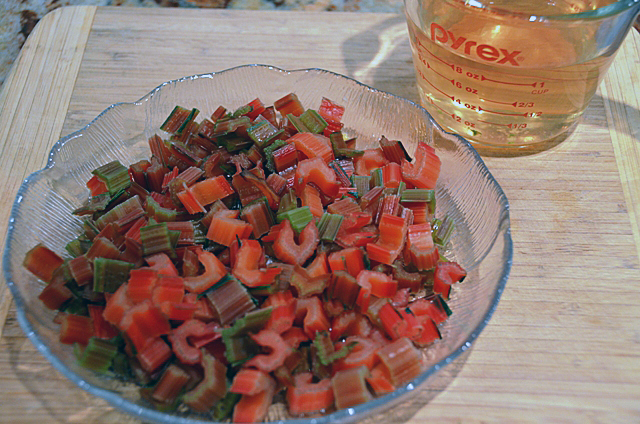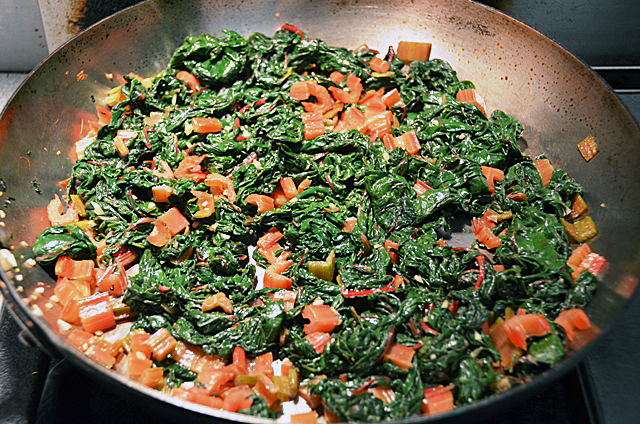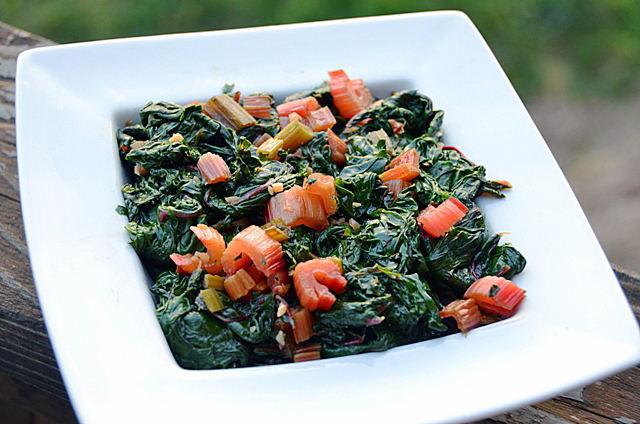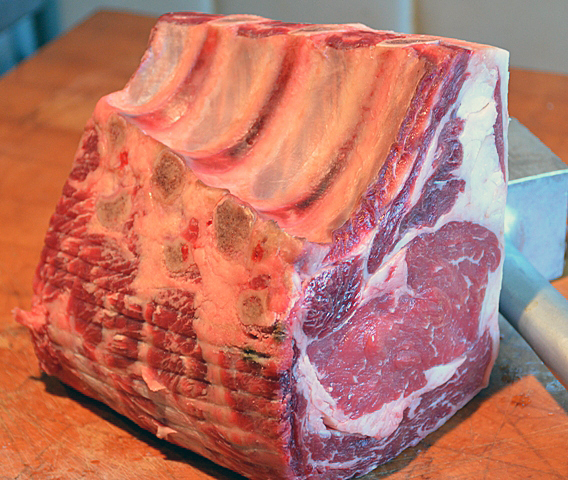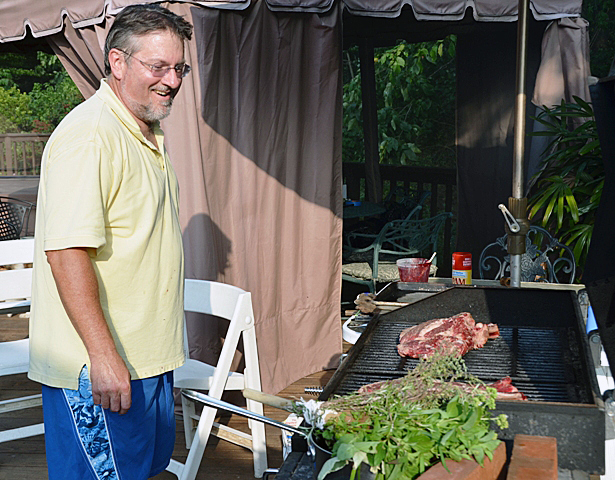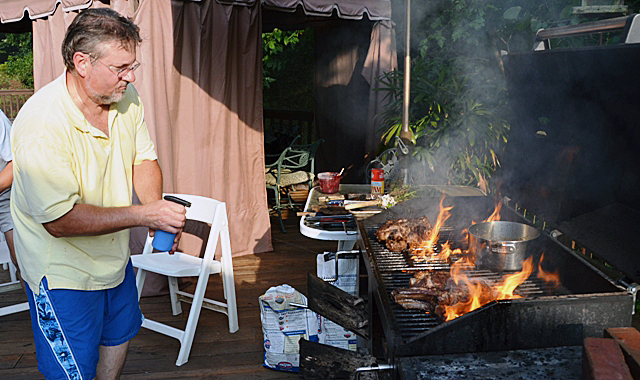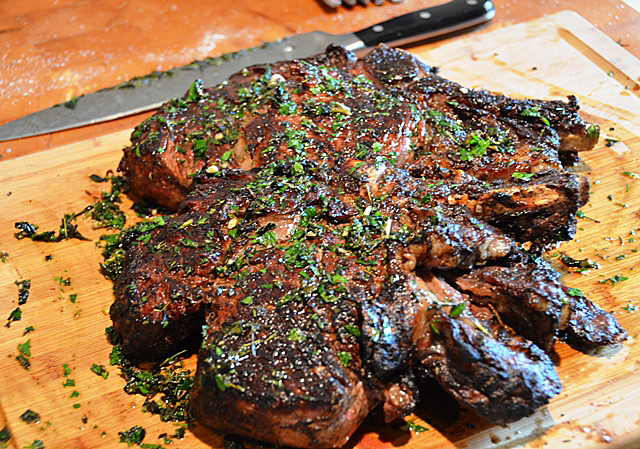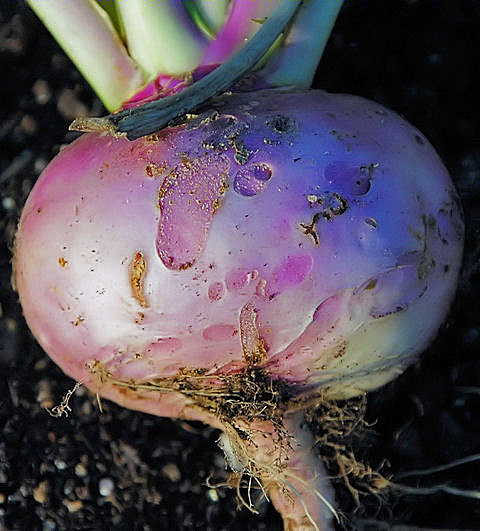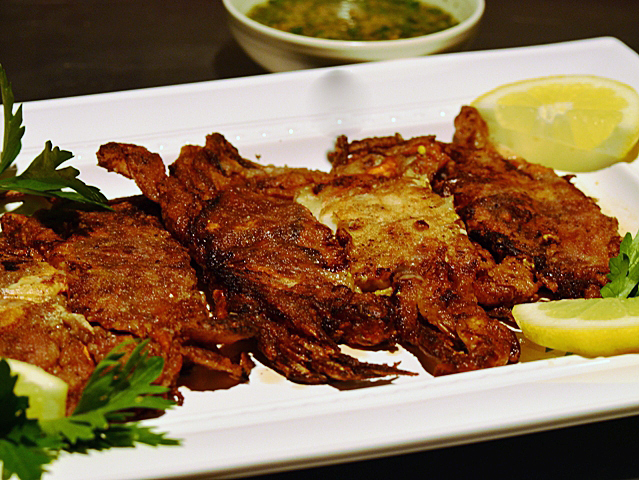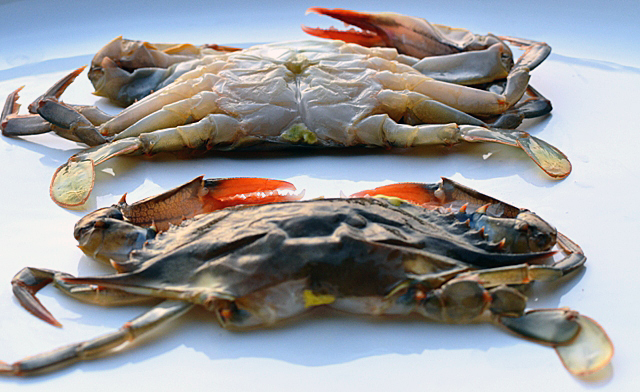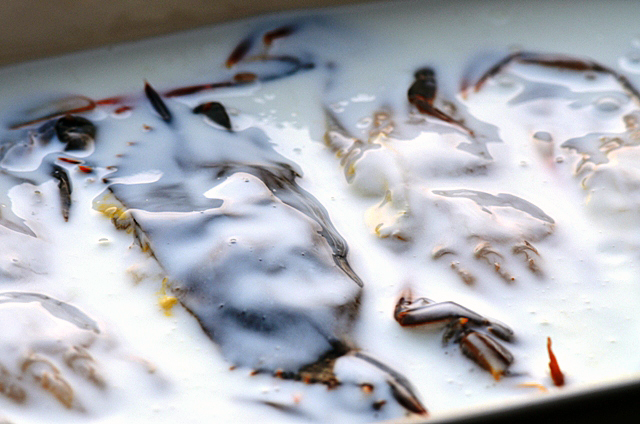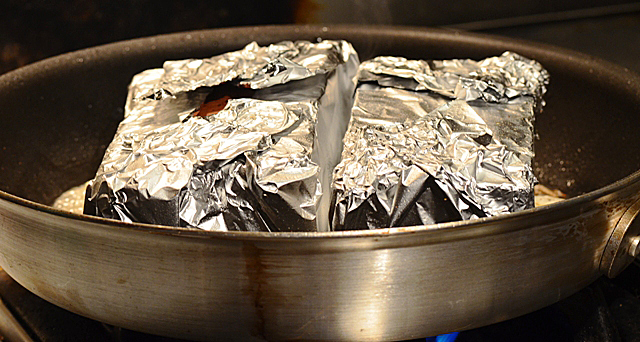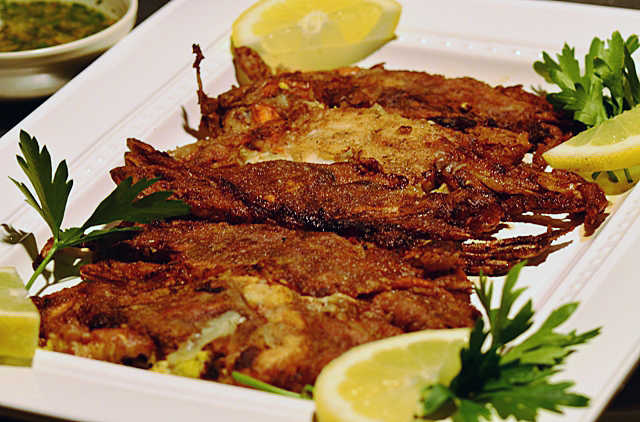Our healthy crop of beets this summer have permanently turned my hands, nails, cutting boards and bowls a bright magenta-red. Not that I’m complaining, garden fresh beets have a sweet earthy quality that no canned or frozen product can match.They are rich in nutrients such as antioxidants, folate, maganese, potassium and dietary fiber. Enjoy just picked beets from your garden or farmer’s market as soon as possible because the sugars that make beets so sweet and flavorful eventually turn to starch. One of the reasons I’m certain why many people say they don’t like beets.
Roasting beets in foil intensifies their flavor and is an easy and neat way to cook them. Just scrub the beets, trim the root ends and the leaves (you can cook them separately as well) and place them on foil. Top with some olive oil, herbs, salt and pepper and wrap them up. Depending on their size, start checking after an hour to see if they are done. They should be able to pierce easily with a fork.
The hot and humid weather we’ve been enduring the last several days called for a cold beet soup.This recipe combines the rich sweetness of beets with the bright tang of citrus. This is a good time to pull out a better quality vinegar since you will be tasting it in the soup. I chose a Cabernet red wine vinegar, a citrus vinegar could be interesting as well. I find the heat in different brands of horseradish vary quite a bit. I prefer a local product, Kelchners horseradish, made in Dublin Pennsylvania. A dollop of silky horseradish sour cream and a sprig of dill completes this refreshing soup.
Chilled Beet Soup with Horseradish Sour Cream
From Fine Cooking magazine
Serves four
Ingredients
- 1-1/2 lb. small or medium fresh beets
- 4 cloves of garlic, unpeeled
- 3 strips (3 inches long) orange zest
- 3 sprigs fresh thyme
- Kosher salt and freshly ground white or black pepper
- 2T olive oil
- 2-1/2c low salt chicken broth
- 2t honey
- 1/3c fresh orange juice
- 2T red wine vinegar
- 1/2c sour cream
- 1T or so prepared horseradish
- A few tsp cream or water as needed
- Fresh dill sprigs for garnish
Directions
- Heat oven to 375F. Put the beets and garlic on a large sheet of heavy-duty aluminum foil. Scatter on the orange zest and thyme. Season with salt and pepper and drizzle with olive oil. Fold up the sides of the foil and crimp to make a tight packet. Place the packet on a baking sheet and slide into the preheated oven.
- After one hour start checking your beets. Open the packet carefully and check the beets to see if they are done with the tip of a sharp knife. The knife should slide in easily. If it doesn’t, reseal packet and continue baking, check again in 15-20 minutes.
- When fully cooked, set beets aside to cool for 15 to 20 minutes. Rub the skins off the beets with a paper towel and cut the beets into chunks. Peel the garlic cloves. Discard the orange zest and thyme sprigs but save any juices that have collected in the foil packet.
- Drop about one third of the beet chunks, the garlic and the collected juices in a blender. Add some of the chicken broth and the honey. Blend to a smooth puree and transfer to a bowl. Continue in batches, pureeing all the beets. Stir in the orange juice and vinegar. Season to taste with salt and pepper. Cover and refrigerate to chill the soup.
- Stir the horseradish into the sour cream. If the sour cream is too stiff, stir in a few teaspoons of cream or water to loosen it. Keep refrigerated until serving time.
- To serve, ladle the soup into bowls or cups and spoon some horseradish sour cream onto each serving. Garnish with fresh dill sprigs.
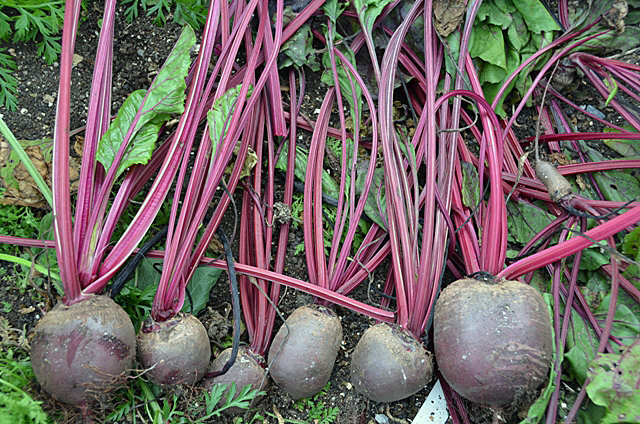
Beets picked fresh from the garden. Don’t forget, beet greens are edible as well.
Trimmed beets topped with fresh thyme sprigs and orange peel ready to be wrapped for the oven.
The beets turned the blender bowl a bright magenta red
